Golden Sun
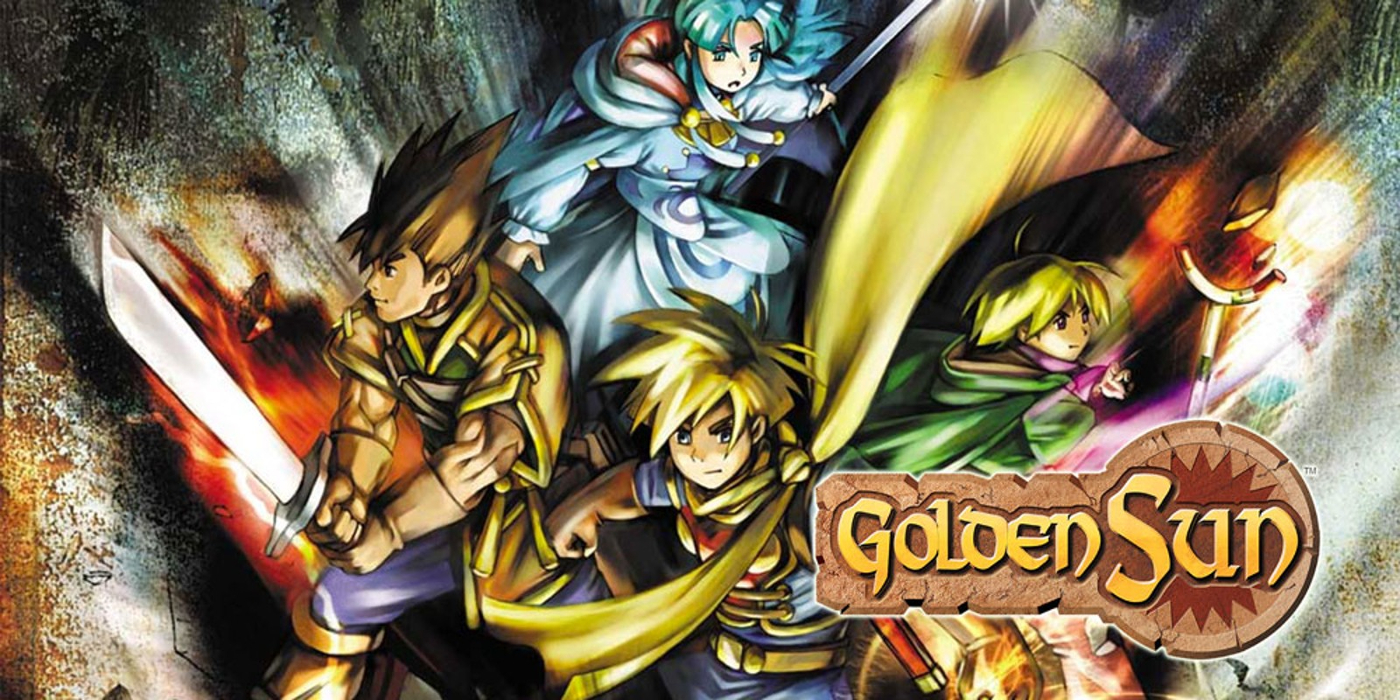

I remember vividly that 2001 was a banger of a year which saw The Fellowship of the Ring hit the cinemas, Grand Theft Auto 3 cause absolute mayhem with video game Karens who think we have become too violent, and Alien Ant Farm’s version of Smooth Criminal hit the alternative scene in bombastic fashion. It’s also the year that a teenage Joe got his hands on Golden Sun, an unassuming RPG from Camelot, the team behind the Mario Golf and Tennis games. As Golden Sun and its sequel, The Lost Age hit the Nintendo Switch Online service, I thought I’d take a look back at the game that cemented my love for both RPGs and the Game Boy Advance.
At A Glance
| Golden Sun | |
| Positives | + Engaging story + Beautiful graphics + Djinn battle system |
| Negatives | – Cumbersome menus – Random encounters – Slow burner |
| Overall | 9/10 |
| Played On | Game Boy Advance |
| Also Available On | Nintendo Switch |
| Find out about our scoring policy here. | |
It sounds odd that Camelot, who made its name with the development of Mario Golf and Mario Tennis on the N64 and Game Boy Color, would be working on a straight-up turn-based J-RPG. The team was also seasoned aficionados in the field, being best known for crafting the brilliant Shining series on the Sega Mega Drive. The experience of the developers comes through the moment you turn on the game and are hit with a powerful intro and a lengthy prologue that sets the story in motion.
Golden Sun takes place in a world where magic and alchemy can be used by certain Adepts, who wield the power of the four elements. As the game opens, we’re quickly told that the power of the Adepts went unchecked, leading to a huge war where the only way to stop it was to seal the power away, deep in a mountain. That is until two villains decide to take power for themselves and look set to destroy everything in their path, including the village of our hero Isaac. This young blonde-haired boy is slowly cultivating his powers. When tragedy strikes, he’s tasked with chasing down these nefarious villains and stopping their plan to take over the world. In true J-RPG style, Isaac is joined on his quest by three compatriots, his best friend Garet, along with Ivan and Mia, two travellers who get caught up in the adventure.
To begin, Golden Sun’s story takes its time to get going. The prologue seems to last an absolute age as the game sets up its lengthy plot. I do remember the first time I played the game all those years ago, I didn’t have the patience for such a meandering story but once you have all four party members, everything ramps up at speed and the slow start is quickly forgotten. As the journey across the vast world begins to unfold, there are markers to tell you this isn’t your standard RPG. Magic, for instance, can be used both in and out of battle, and the characters will regain their Psynergy points (MP) while just wandering about.
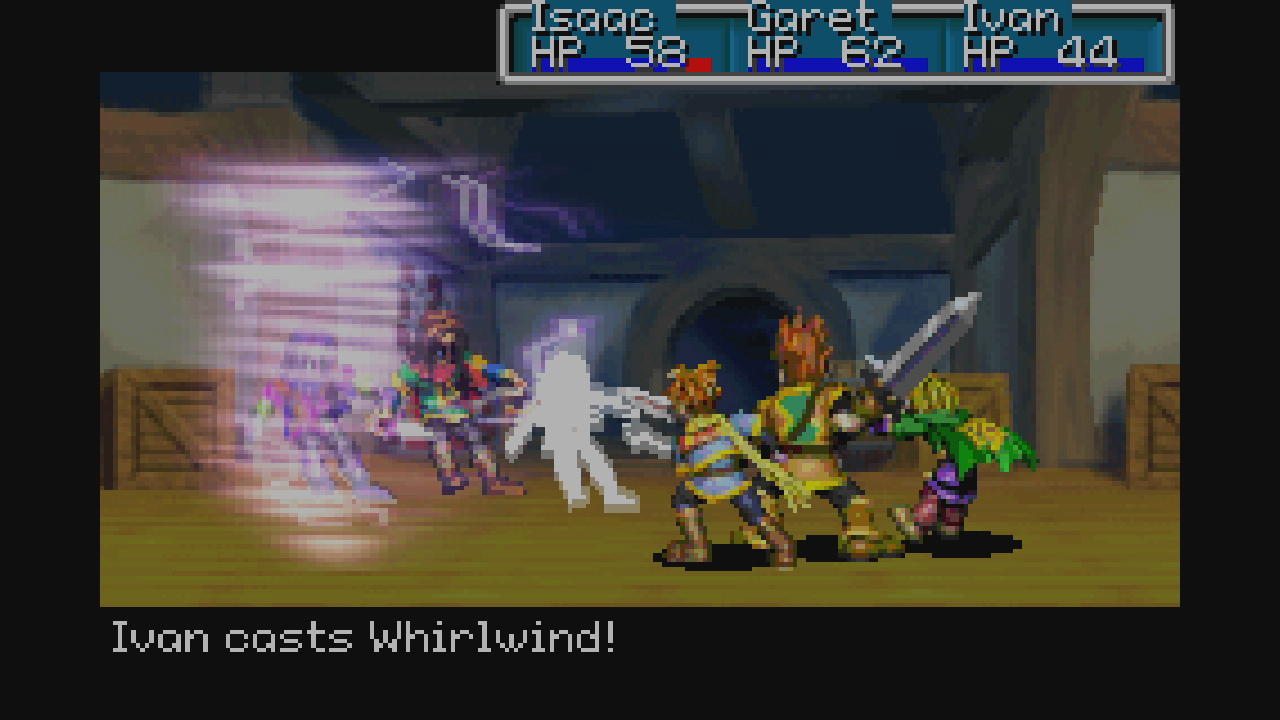
Perhaps the biggest mechanic to prove Golden Sun isn’t ‘just another RPG’ is how the characters are customisable. To begin with, the party are all adept at each element which gives them access to certain spells throughout the game. Isaac naturally veers towards earthly powers, Garet can harness the power of fire, Ivan has the power of wind and Mia draws her power from water. It might sound like the party is made up of various mages that are seen in any number of RPGs but what Golden Sun does differently is allow you to cross-skill your characters at any point by equipping companions called Djinn.
Djinn are elemental characters who join you on your adventure and can be attached to any player to enhance their stats. The more Djinni you discover on your quest, the more powerful you become, and even unlock some powerful summons. The best combinations are to match the type of Djinn to the character, for example giving Isaac all of the Earth Djinn, but I was surprised to see I wasn’t limited to this approach. Giving Garet all of the Earth Djinn would result in a mix of both fire and ground-type spells, and although he also gets certain disadvantages, it’s fun to experiment with different combinations to see in which ways you could unleash your Djinn.
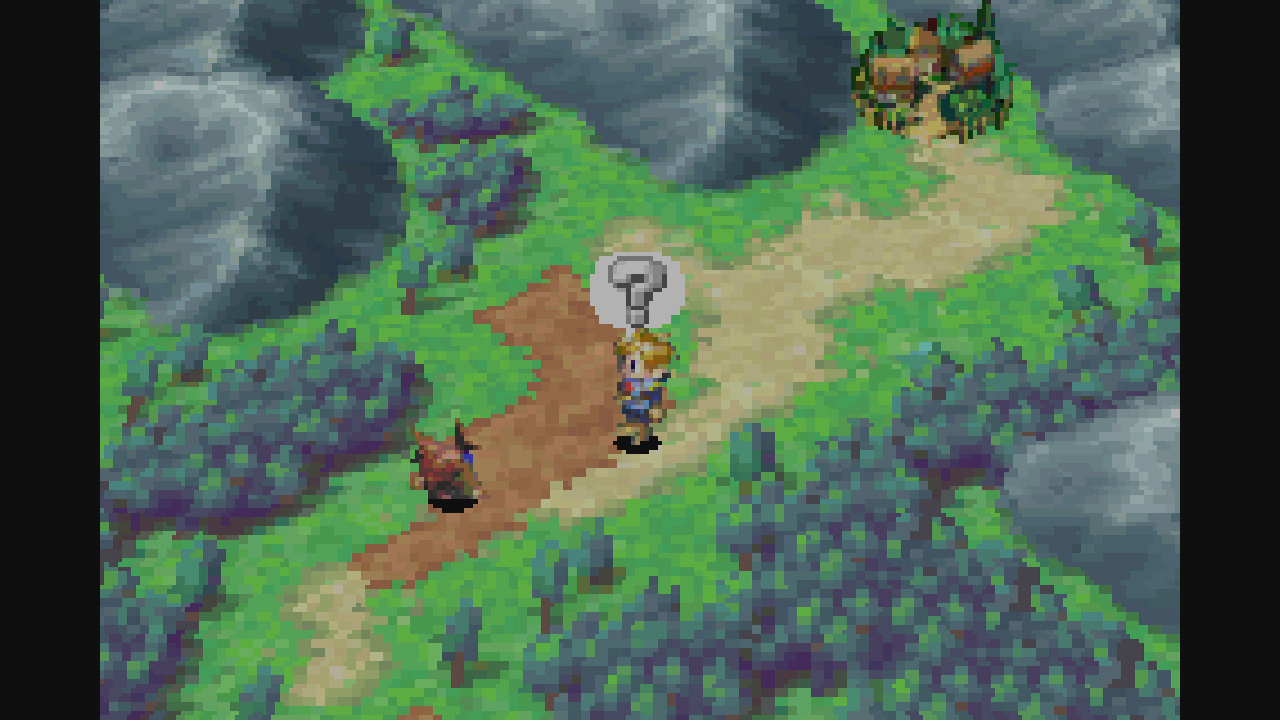
It’s good to have such a flexible battle system as there are alot of random encounters throughout Golden Sun. Most of your time will be spent in and out of fights which admittedly allows you to experiment with everyone throughout the 20-hour or so playtime. While you will be going in and out of battles like a bladed yo-yo, you can just pummel the A button on the weaker baddies to skip all the hoo-ha and be done in around 5 seconds. Random encounters are always a double-edged sword, too many and it becomes a chore, too few and the grind can become a slog. While Golden Sun is firmly in the former camp and is unlikely to win over players looking to get into RPGs, I felt it didn’t matter if I was going to and fro every few seconds because the battle system is so well refined.
When setting off on the adventure I was drawn in by the gorgeous 16-bit era pixel art, with each area being beautifully handcrafted. As the GBA’s computing power was way beyond the SNES, Camelot was able to build on the look of the traditional top-down RPG and sneak some crafty effects into the game. A dynamic battle camera that sweeps across the landscape every time a sword is swung and stunning cutscenes for the higher-end spells and summons are just a few examples of this. This is all backed up by a brilliant chip-tune soundtrack that encapsulates the grandiose adventure that cries out desperately to be presented on something bigger than a handheld console. Granted, after 20 years the graphics aren’t as sharp as they once were and show signs of needing a fresh coat of paint. Even so, Golden Sun just exudes a visual charisma that you don’t see every day. To this day I still enjoy seeing the Psynergy represented as an oversized cartoon hand that scoops and grabs whatever you tell it to.
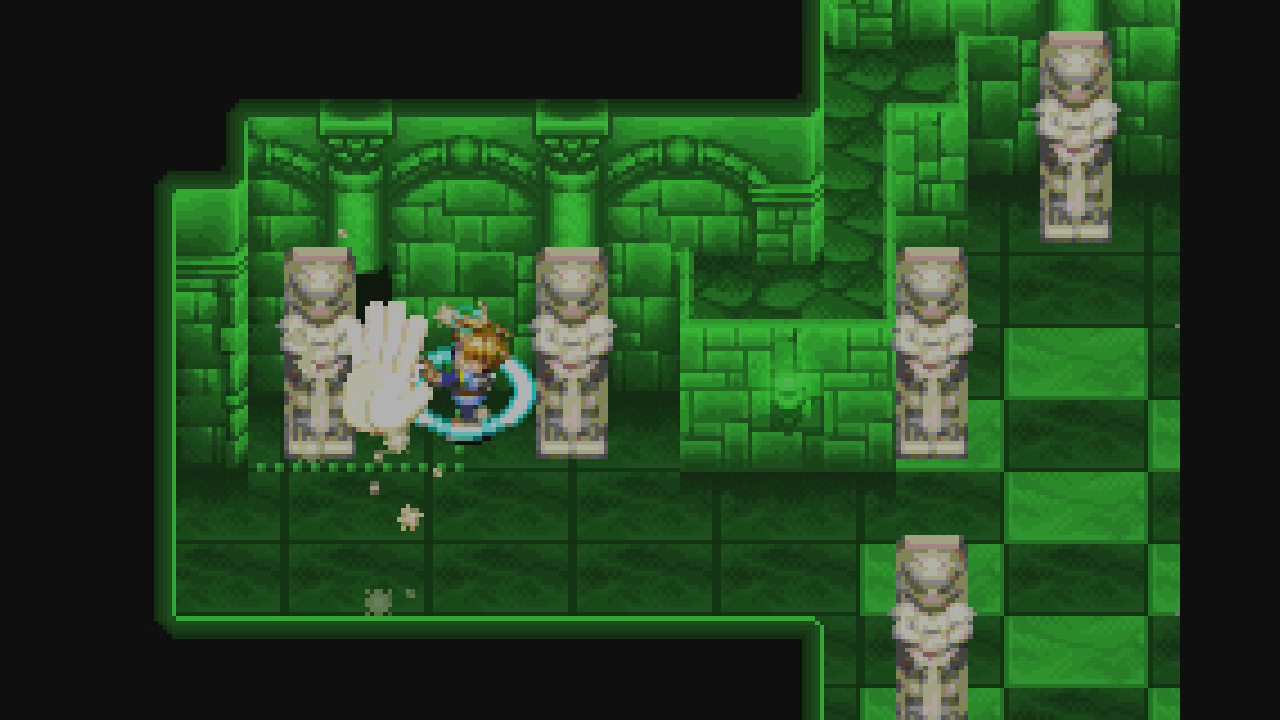
The only real downside to Golden Sun is the menu system as it is split across the four characters. Each warrior has an inventory where all their equipment, potions and miscellaneous items are stored. At first, this approach makes sense; logically, Isaac would have his own stuff to carry from the rest of the party, and the fact you can swap and switch items between party members, but there’s one problem with this – organisation. Due to the GBA’s limited button setup, navigating through the menus requires several button presses to find what you’re looking for and even when you think you have a handle on things, when it comes to using something in battle, often it’s allocated to a different character. A clunky menu is by no means a dealbreaker, but most of my frustration with the game has always been because of the organisational setup as opposed to an unfair boss.
Replaying Golden Sun all these years later still brings me joy that’s hard to come by. The story, while slow to get going, is captivating from the moment you have your first battle, and stays engaging until the credits roll. The battle system that forces you to balance your power levels on the fly is impeccably implemented and simply has no right to be that good on the Game Boy Advance. Aside from a few issues with a menu (which I’ve hated for two decades), and the aforementioned slow beginnings, Golden Sun, in my opinion, was, is, and will remain, one of the best JRPGs to exist.
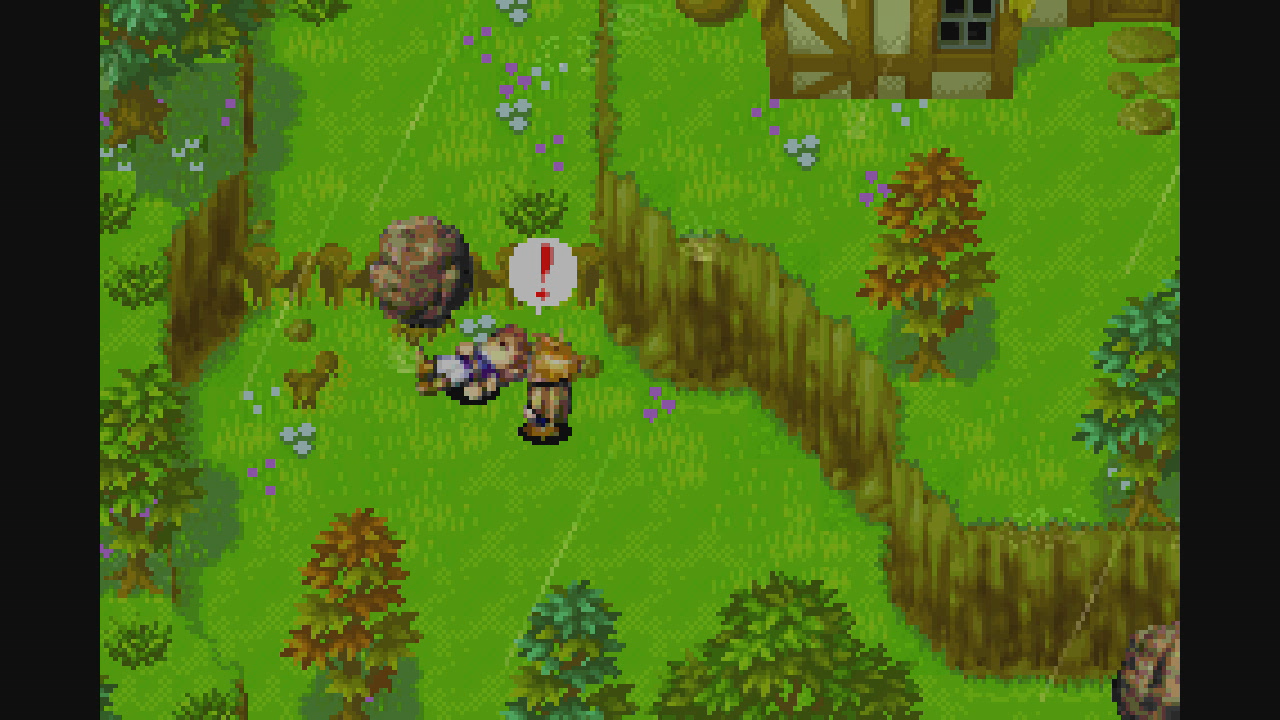


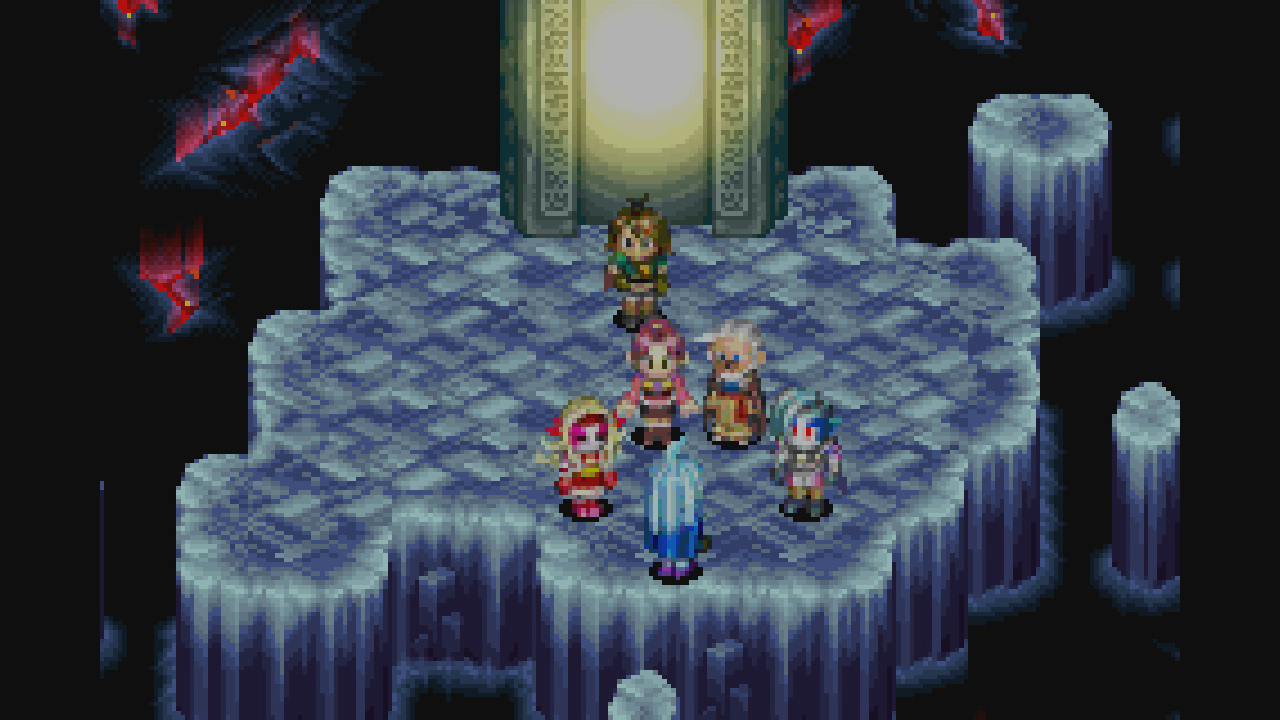

Thanks for taking the time to read our review. If you’d like to support us further, please consider buying us a coffee!






